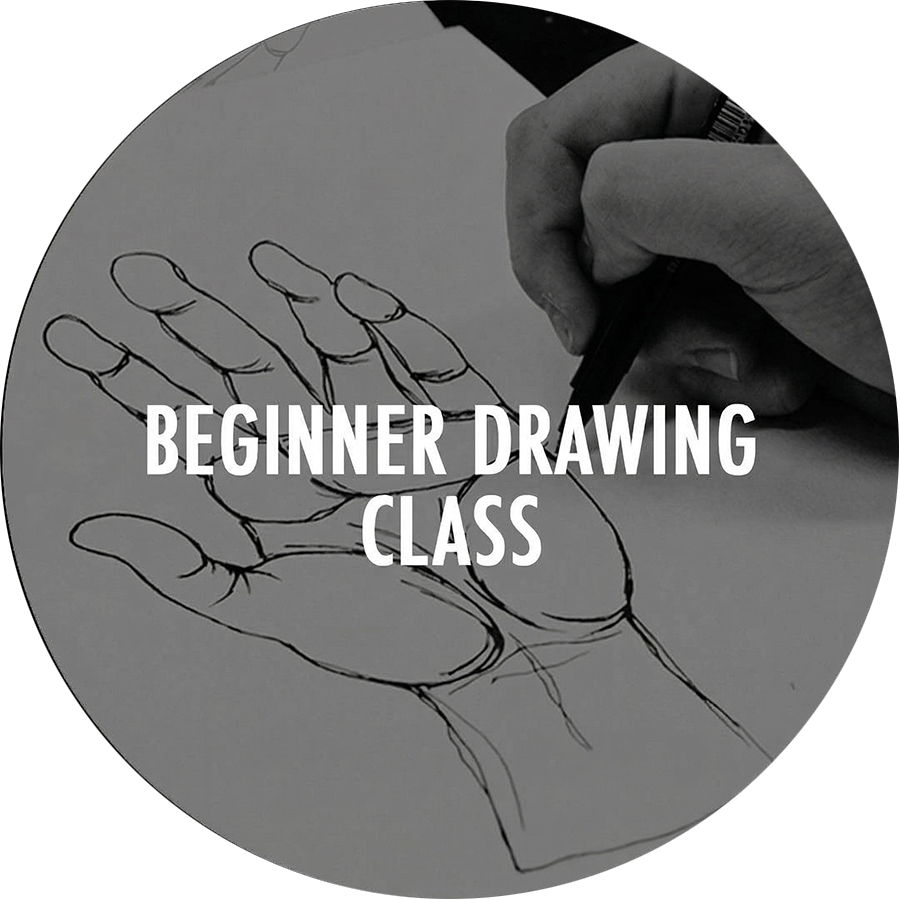If you want to get better at drawing, stop doing this (tip #3):
In my time teaching art, I’ve noticed similar patterns amongst budding artists (I’ve taught art courses online and art classes in Kingscliff NSW and Gold Coast art classes). In my 10+ years of art teaching, I can now confidently outline three common mistakes beginner artists make. Over the last 2 weeks I’ve outlined the #1 mistake budding artists make and the #2 mistake new artists make. And today I’m documenting the third most common mistake I see new artists make and how to avoid it:
#3 mistake: Using coloured photos for black and white drawings.
Don’t get me wrong, using coloured references is not a bad thing. In fact, the ultimate form of drawing is drawing from life, and real life is in colour after all. However, for beginner artists, it can be extremely difficult to judge tone correctly when an image is in colour. For example, take a look at the image below:
This image consists of three tones: white, black and a grey. However, to the eye it appears there are two different greys: the grey on the left appears lighter than the grey on the right. This is because tones appear differently depending on the tones surrounding them. In this case, the grey lines on the right appear darker as they are side by side to white tones. The grey tones on the left appear lighter as they are side by side to the black tones. So you can see, tone is very challenging to judge accurately, especially without the help of a tutor or adult drawing classes!
Now let’s add colour into the mix:
In the image above, the two squares in the centre appear to be different colours. However I can assure you they are the same colour (or hue) and same tone (darkness vs lightness). They are the same, but appear different because of the surrounding colour. So when we look at a coloured drawing, we can misjudge not only the tone (how dark or light something is) but also the hue (the colour). So, what do I recommend beginner artists do to avoid this common mistake?
Here’s what I recommend:
I recommend all beginner artists start off by mastering tone (how dark and how light something is) first with black and white images (greyscale).
Then, once you feel you have a good mastery of tone, you can progress to greyscale drawings (in black and white) from coloured references
Finally, try coloured drawings from coloured references.
Why adult drawing classes can help you avoid this mistake:
Having the guidance of a teacher who is an experience artist can help you to see tones accurately. Sometimes all it takes is an experienced artist to point out where a tone is not quite right, and then you can see it yourself. Of course, there is nothing wrong with embarking on your art journey on your own. Trial and error is a great way to learn. However, if you want to quickly get better at drawing and avoid the frustration, I recommend enrolling in adult drawing classes, either online or in-person. I also have online drawing classes for kids. At the Artory we teach the fundamentals in our beginners drawing classes in Murwillumbah.
Anne x
Try one of our adult drawing classes in Kingscliff NSW and Murwillumbah:
Can’t make it in person? Try our online adult drawing classes:
THE ONLINE ARTORY ACADEMY
Exclusive access to all Artory courses for $40 per month





